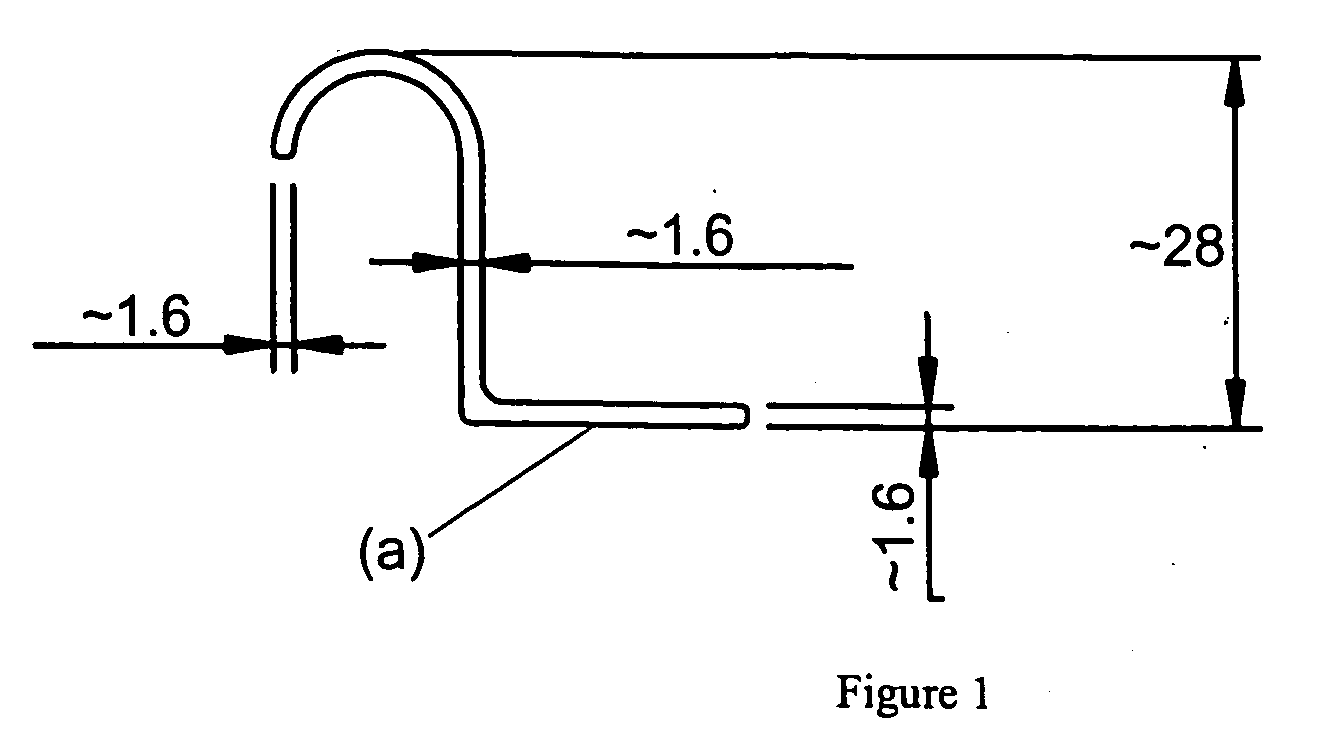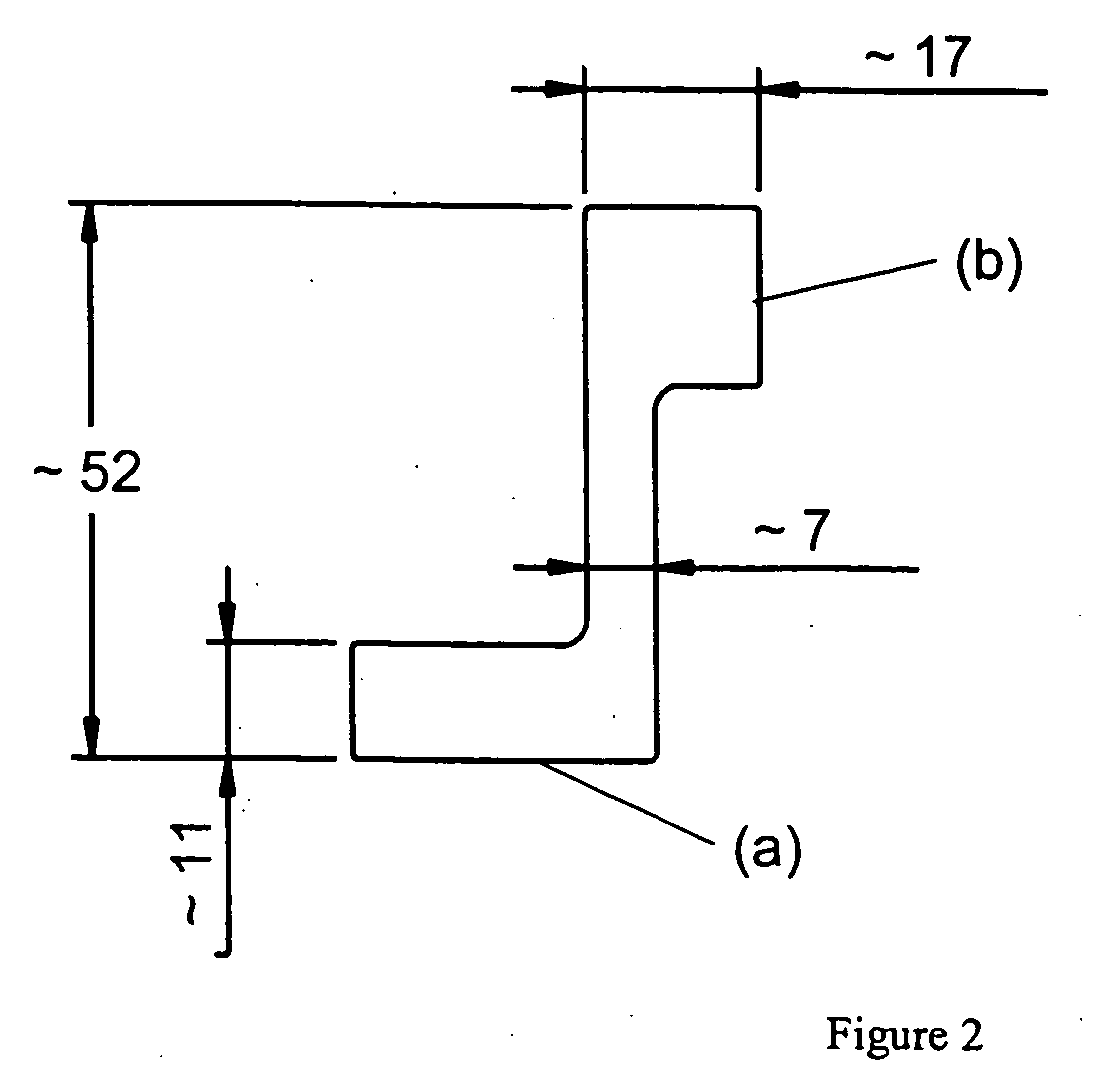Al-Zn-Mg-Cu alloys and products with high mechanical characteristics and structural members suitable for aeronautical construction made thereof
a technology of cu and zn, which is applied in the direction of aircraft components, transportation and packaging, and seating arrangements, etc., can solve the problems of difficult solid solution, low formability of products, and difficult casting, and achieve high tensile yield strength, high zinc content, and high ultimate tensile strength (uts).
- Summary
- Abstract
- Description
- Claims
- Application Information
AI Technical Summary
Benefits of technology
Problems solved by technology
Method used
Image
Examples
example 1
[0091] Several Al—Zn—Mg—Cu alloys were prepared by semi-continuous casting of rolling ingots, and were then subjected to a range of conventional transformation techniques, comprising a homogenisation stage, the parameters of which have been determined according to U.S. Pat. No. 5,560,789, the content of which is incorporated herein by reference in its entirety. The homogenisation stage was followed by hot rolling, solution heat treatment which was followed by quenching and stress relieving operations, and finally an aging treatment was conducted in order to obtain a product in temper T651. This process resulted in the formation of plates in the T651 temper having a thickness of 20 mm.
[0092] Compositions of plates according to this example are specified in Table 1 below:
TABLE 1Mg / AlloyZnMgCuFeSiZrTiMnScCuA8.402.111.830.090.060.110.017001.15B10.273.20.710.080.030.110.017004.57C10.082.690.950.080.030.110.014002.83D9.972.141.320.090.030.110.017001.62
[0093] The static mechanical chara...
example 2
[0097] Several rolling ingots whose chemical composition is specified in Table 3 were cast. The silicon content was approximately the same for all of them, about 0.04%.
[0098] Alloys G1, G2, G3 and G4, as well as alloys B and D, described in example 1 are used as comparisions with certain preferred embodiments. Alloy C is an alloy according to the invention described in example 1. During testing, all these alloys exhibited satisfactory castability, that is, no splits or cracks were observed during casting tests performed on an industrial scale.
[0099] Alloys G5, G6, G7, G8 were used as comparisons with certain preferred embodiments of the present invention, and alloy G9 is an alloy 7060 as per the prior art; these alloys exhibited cracks during casting tests.
[0100] Difficulties showing up during casting of these alloys do not necessarily render the wrought products from these plates unsuitable for use, but they are the cause of extra cost because their implementation (that is, the ...
example 3
[0102] Extrusion ingots have been cast from alloys whose composition is summarized in Table 4. Homogenization was carried out as follows:
Ingots Q1 and Q2: 4 h at 465° C. +20 h at 476° C.Ingots Q3 and Q4: 4 h at 465° C. +20 h at 471° C.Ingots P1 through P3:20 h at 471° C.
M, T and S phases were completely dissolved by these homogenization treatments; this was checked by differential enthalpic analysis (according U.S. Pat. No. 5,560,789, incorporated herein by reference).
[0103] Ingot diameter was 200 mm for ingots P3 and Q1 through Q4, and 155 mm for ingots P1 and P2.
TABLE 4IngotZnMgCuCrMnSiFeZrTiMg / CuP18.102.481.650.140.170.010.080.150.031.50P28.452.601.760.180.180.050.140.120.021.48P38.392.551.710.180.160.040.150.110.021.49Q110.203.100.680.170.170.070.080.130.044.56Q210.202.840.950.180.170.060.110.130.032.99Q39.982.101.240.180.170.060.140.120.031.69Q410.002.151.250.180.170.070.140.120.031.72R110.182.970.660.170.160.070.130.110.024.5R210.163.120.700.170.160.070.130.110.024.46
[01...
PUM
| Property | Measurement | Unit |
|---|---|---|
| thickness | aaaaa | aaaaa |
| tensile yield strength | aaaaa | aaaaa |
| bending angle | aaaaa | aaaaa |
Abstract
Description
Claims
Application Information
 Login to View More
Login to View More - R&D
- Intellectual Property
- Life Sciences
- Materials
- Tech Scout
- Unparalleled Data Quality
- Higher Quality Content
- 60% Fewer Hallucinations
Browse by: Latest US Patents, China's latest patents, Technical Efficacy Thesaurus, Application Domain, Technology Topic, Popular Technical Reports.
© 2025 PatSnap. All rights reserved.Legal|Privacy policy|Modern Slavery Act Transparency Statement|Sitemap|About US| Contact US: help@patsnap.com



